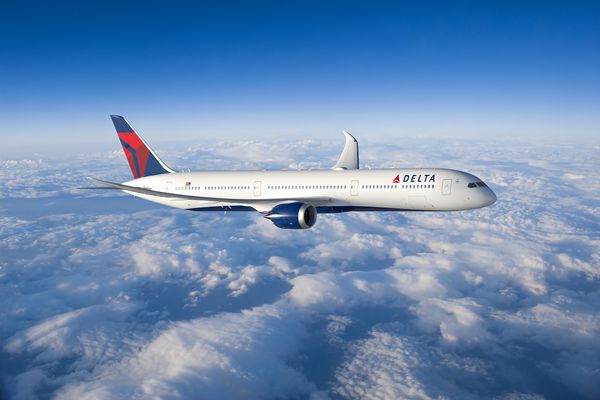This article is temporarily locked. Please come back later.
AeroXplorer is on Telegram!
Subscribe to the AeroXplorer Telegram Channel to receive aviation news updates as soon as they are released.
View Channel
YOU MAY BE INTERESTED...
Flydubai, Turkish, and Pegasus Suspend Flights Amid Escalating Unrest and Digital Blackout » Pivot Airlines Rebrands to Great North Airlines to Spearhead Canada’s Regional Revival » LATAM Boeing 767 Immobilised in Atlanta After Catastrophic Eight-Tire Blowout »
Flydubai, Turkish, and Pegasus Suspend Flights Amid Escalating Unrest and Digital Blackout » Pivot Airlines Rebrands to Great North Airlines to Spearhead Canada’s Regional Revival » LATAM Boeing 767 Immobilised in Atlanta After Catastrophic Eight-Tire Blowout »
Comments (5)
 Eloy
Hello there! Do you know if they make any plugins to help with Search Engine Optimization? I'm trying to get my website to rank for some targeted keywords but I'm not seeing very
good success. If you know of any please share.
Kudos! I saw similar article here: Backlinks List
Eloy
Hello there! Do you know if they make any plugins to help with Search Engine Optimization? I'm trying to get my website to rank for some targeted keywords but I'm not seeing very
good success. If you know of any please share.
Kudos! I saw similar article here: Backlinks List
650d ago • Reply
 Hudson
Hey! Do you know if they make any plugins to assist with SEO?
I'm trying to get my website to rank for some targeted keywords but I'm not seeing
very good gains. If you know of any please share.
Thanks! I saw similar blog here: GSA List
Hudson
Hey! Do you know if they make any plugins to assist with SEO?
I'm trying to get my website to rank for some targeted keywords but I'm not seeing
very good gains. If you know of any please share.
Thanks! I saw similar blog here: GSA List
650d ago • Reply
 Basil
Hello! Do you know if they make any plugins to assist with Search Engine Optimization? I'm trying
to get my blog to rank for some targeted keywords but I'm
not seeing very good success. If you know of any please
share. Appreciate it! You can read similar text here: Sklep online
Basil
Hello! Do you know if they make any plugins to assist with Search Engine Optimization? I'm trying
to get my blog to rank for some targeted keywords but I'm
not seeing very good success. If you know of any please
share. Appreciate it! You can read similar text here: Sklep online
655d ago • Reply
 Reda
Hi it's me, I am also visiting this site on a regular basis, this website is really pleasant and the people are genuinely sharing fastidious thoughts.
I saw similar here: najlepszy sklep and also here: sklep online
Reda
Hi it's me, I am also visiting this site on a regular basis, this website is really pleasant and the people are genuinely sharing fastidious thoughts.
I saw similar here: najlepszy sklep and also here: sklep online
683d ago • Reply
 inhiche
Bergmann, P, Boonen, S, Devogelaer, J, P <a href=https://enhanceyourlife.mom/>priligy 30mg tablets</a>
inhiche
Bergmann, P, Boonen, S, Devogelaer, J, P <a href=https://enhanceyourlife.mom/>priligy 30mg tablets</a>
459d ago • Reply
Add Your Comment
SHARE
TAGS
INFORMATIONAL JetblueDavid Neelemanjfknew yorkRECENTLY PUBLISHED
 Student Education as a Pathway to an Aviation Career
Explore how to become a pilot through aviation degree programs and flight school. Learn about requirements, costs, and career options.
INFORMATIONAL
READ MORE »
Student Education as a Pathway to an Aviation Career
Explore how to become a pilot through aviation degree programs and flight school. Learn about requirements, costs, and career options.
INFORMATIONAL
READ MORE »
 EVA Air to Launch Nonstop Flights to Washington-Dulles
EVA Air confirmed on January 12 that it will launch its first nonstop service between Taipei and Washington-Dulles International Airport in July 2026.
ROUTES
READ MORE »
EVA Air to Launch Nonstop Flights to Washington-Dulles
EVA Air confirmed on January 12 that it will launch its first nonstop service between Taipei and Washington-Dulles International Airport in July 2026.
ROUTES
READ MORE »
 Delta Orders 30 Boeing 787-10, Options for Additional 30
Delta Air Lines announced on Tuesday a landmark agreement with Boeing to integrate the 787 Dreamliner into its widebody fleet. The deal, which includes a firm order for 30 787-10 airplanes and options for an additional 30, marks the first time the Atlanta-based carrier has placed a direct order for the Dreamliner family.
NEWS
READ MORE »
Delta Orders 30 Boeing 787-10, Options for Additional 30
Delta Air Lines announced on Tuesday a landmark agreement with Boeing to integrate the 787 Dreamliner into its widebody fleet. The deal, which includes a firm order for 30 787-10 airplanes and options for an additional 30, marks the first time the Atlanta-based carrier has placed a direct order for the Dreamliner family.
NEWS
READ MORE »



